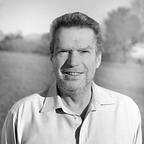Growing emotional intelligence
“Winnie-the-Pooh,” as he was originally called, first appeared in a story written in 1926 by A.A. Milne, who based the characters on his young son, Christopher Robin, and the boy’s stuffed animals. The original toy bear was named after Winnie (short for “Winnipeg”), a bear that had been adopted as a cub by a Canadian soldier during World War I, who was a popular attraction at the London Zoo. The “Winnie-the-Pooh” stories are characterised by interesting personalities and whimsical humour — the Canadian Medical Association wrote a “tongue-in-cheek” article that diagnosed the characters with the following disorders:
- Pooh — “impulsivity with obsessive fixations” (Pooh is obsessed with honey and will do whatever it takes to get it, putting himself and his friends at risk in the process); “attention deficit hyperactivity disorder” (a strain of this disorder, inattentive subtype, is when a person shows careless and indifferent behaviour towards peers) and “obsessive-compulsive disorder” (Pooh likes to count — a lot, repetitively)
- Piglet — “generalised anxiety disorder” (he is an extreme worrier, causing stress, anxiety and general nervousness — his irrational anxiety causes him to suffer from a distinct stuttering speech impediment)
- Owl — “dyslexia” (even though owl is the most intelligent of all the characters, he often gets his spelling wrong, with letters missing, swapped around or even written back to front)
- Tigger — “attention deficit hyperactivity disorder” (although a social magnet amongst the characters, he is unable to control himself and is actually a bad role model being so impulsive)
- Kanga — “social anxiety disorder” (she is extremely protective over Roo, her son, suffocating him by not allowing him to make any decisions or mistakes on his own)
- Rabbit — “obsessive compulsive disorder” (he does not relax, but is obsessed with having everything organised, often shown when he is gardening)
- Eeyore — “depressive disorder” (he has an extremely negative outlook on life, is always down in the dumps and is never shown to experience emotions such as joy or excitement)
- Christopher Robin — “schizophrenia” (all his friends are actually stuffed toys — they seem to be representing feelings that he actually experiences himself)
We smile at the above diagnosis, probably because we experience and/or identify with similar symptoms in ourselves. All of us show some or more of these symptoms at various stages of our lives — oh, if only life was less cruel, we would not be getting anxious. Oh, if only things would just fall into place, we would not have to feel like we were organising everything to manipulate success. Oh, if only leaders would take responsibility with integrity, we would not have to assume a negative outlook on life. Oh, if only we had more time to think, we would not have to make impulsive decisions. With this type of “oh” thinking, we tend to behave in certain ways to protect ourselves — our income, our relationships and our lives — unfortunately not focusing on those things that would really make a difference in our and others’ lives.
So, on what can we focus to bring about good results? External issues are really difficult to change, but we can change ourselves. The same requires a heightened emotional intelligence — the process of engaging your conscious awareness to discover the patterns of your mind-set, emotions and behaviours. It means transforming those patterns that are limiting and engaging ones that represent your values and chosen ways of being and deliver your desired results. Emotionally intelligent people pursue self-mastery in two ways:
- Self-management — the ability to control and manage your internal state of being in real time so you can be more focused and centred as you perform. This implies preventing your ego and selfishness from taking centre-stage. It requires careful consideration, eliminating distraction and focus on the task at hand.
- Personal transformation — overcoming historical or conditioned fears, doubts and self-limiting styles of being that keep you from being fully focused in present time or those which cause undesirable behaviours. This is a longer process that takes place over time.
Dean and Linda Anderson (Beyond Change Management), showing great insight, put it this way: “Self-management is what change leaders do ‘online’ to adjust their internal state during real-time activities to maximise their performance. Personal transformation is what change leaders do ‘off-line’ over time to manifest more of their potential. It is how they overcome habitual ego reactions so they won’t need to manage them in real time”.
Emotional intelligence begins with conscious awareness and a strong ability to notice and understand what is going on inside of you. Emotional intelligence grows with practise and asking appropriate self-developmental questions. Emotional intelligence matures with a conscious approach to responsibility and leadership effectiveness.
Originally published at https://www.stretchforgrowth.com on February 14, 2017.
